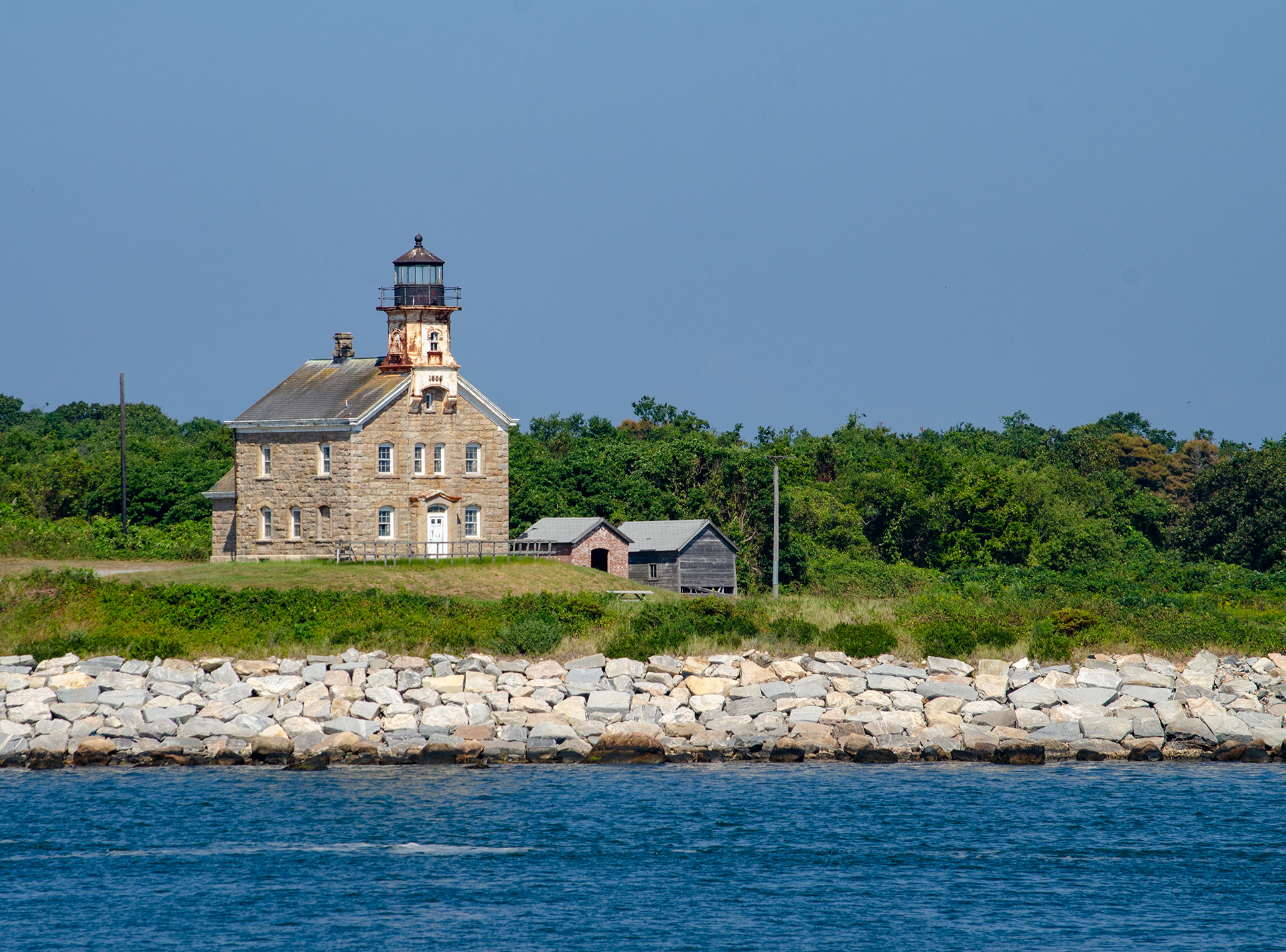$1.5 Million For Plum Island Lighthouse

A historic Plum Island landmark is receiving funds for long-term preservation.
The Plum Island Lighthouse, first lit in 1827, is receiving $1.5 million worth of restoration work financed by the U.S. Department of Homeland Security and U.S. Army Corps of Engineers. The money will go toward replacing rusted-out ironwork at the door and top of the lighthouse. Repairs are also needed on a deteriorating roof, as well as a cleaning out of the asbestos-laden interior, all the result of years of neglect and exposure to the elements.
“The lighthouse on Plum Island is a historic treasure,” Southold Supervisor Scott Russell said. “The fate of the lighthouse had been a great concern given the uncertainty of the future of Plum Island.”
The lighthouse, which the Department of Homeland Security owns, guided mariners through Plum Gut for more than 100 years. The three acres at the west end of Plum Island that the lighthouse stands on was purchased from Richard Jerome for $90 in 1826, and marks the east side of Plum Gut, a mile-wide entrance to Long Island Sound with extremely strong tidal currents. Orient Point lies on the opposite side of Plum Gut.
The first lighthouse on Plum Island was a 35-foot octagonal tower built of rough stone using a $4000 appropriation granted by Congress May 18, 1826. Ten lamps with reflectors, divided into two groups of five and arranged on rotating copper tables, served as the tower’s lighting apparatus, and an eight-room dwelling was provided for the keeper. In 1856, a fourth-order Fresnel lens that produced a white flash every 30 seconds replaced the array of lamps and reflectors. A second light on the granite house was added in 1869, and the metal tower in 1978, the year the lighthouse was automated by the Coast Guard and replaced by a modern structure. Plum Island Lighthouse is listed on federal, state, and local historic landmark registers.
“This is a good preliminary step in efforts to rehabilitate and preserve this irreplaceable part of American history,” Southold Town Historic Preservation Commission Chairman Ted Webb said, adding the cliff in front of the lighthouse was stabilized some years ago with granite boulders from the breakwater at Sag Harbor. “Sadly, through neglect, the lighthouse is in very poor condition, but it can be saved. As one who passes by this American treasure on a daily basis, I am witness to the rapid acceleration of its physical deterioration. It is worth noting that thousands of mariners and ferry passengers pass by this lighthouse every week.”
Webb narrates lighthouse cruises around the North Fork, and has visited the structure nearly every day for the last six years.
Sadly, the lighthouse has a history of neglect dating back to the 1800s.
“Both the tower and keeper’s dwelling are in bad condition and should be rebuilt,” the 1868 Annual Report of the Lighthouse Board stated. “The tower, built in 1827, leaks badly; the masonry is soft and crumbling; the lantern is of the old pattern, and with small lights and large astragals, and it leaks badly. It is thought that the old buildings are not worth the money, which would be required to put them in good order, and it is therefore proposed to rebuild them.”
Funds were allocated on March 3, 1869 for a replacement, and it went into operation in 1870 using the Fresnel lens from its predecessor. The new lighthouse consisted of a granite, two-story dwelling, with a white cast-iron tower, capped by a black lantern room, attached to the front of the dwelling’s pitched roof. A fog bell, mounted in a wooden tower and tolled by a Steven’s striking apparatus, went into operation with the new light. The previous keeper’s dwelling remained standing until 1885. The lighthouse’s slate roof, which leaked badly, was replaced in 1878 with a shingle roof, and the fog bell was raised 10 feet higher on the bell frame that same year so it could be better heard.
Noted angler William Wetmore was head keeper when the current lighthouse was built. John Jacob Astor, who would later be the wealthiest person to perish aboard the Titanic, was outfitted with bait and lines by Wetmore. Three years later, then-President Grover Cleveland stopped at the island to get the keeper’s pointers on catching bluefish. Wetmore was 85 and reportedly the oldest keeper in the country when he died in 1892.
Soon after the attack on Pearl Harbor in December 1941, lighthouse personnel became part of the war effort as lookouts were established at many stations. A lookout tower was mounted atop the lantern room at Plum Island Lighthouse for part of World War II.
Webb and Russell said U.S. Representative Lee Zeldin’s interest in preserving the historic landmark accelerated the restoration effort and funding allocation.
“We are greatly appreciative of the advocacy and success of Representative Zeldin,” Russell said. “His efforts to protect and restore the lighthouse demonstrates his understanding of how important our great history is to the residents of Southold. It also shows how committed he is to protecting not just the future of Plum Island, but also to protecting its history.”
Zeldin pointed to another piece of the lighthouse’s past, being the site of the first battle between British and Continental troops ordered by General George Washington, while also noting its use as a defense fortification and artillery post up until World War II.
“Plum Island is not just a natural resource, but a cultural and historic monument with a rich history. Instead of selling Plum Island and its unrivaled history off to the highest bidder, we must invest in its future by committing to protecting its past and restoring the Plum Island Lighthouse,” Zeldin said. “This federal funding is a critical step in stabilizing the lighthouse and Plum Island’s future, and I look forward to continuing to work with those at every level of government to ensure we continue to restore the island’s landmarks and safeguard its rich history for generations to come.”
Restoration work is expected to be completed by December 2020.
desiree@indyeastend.com



